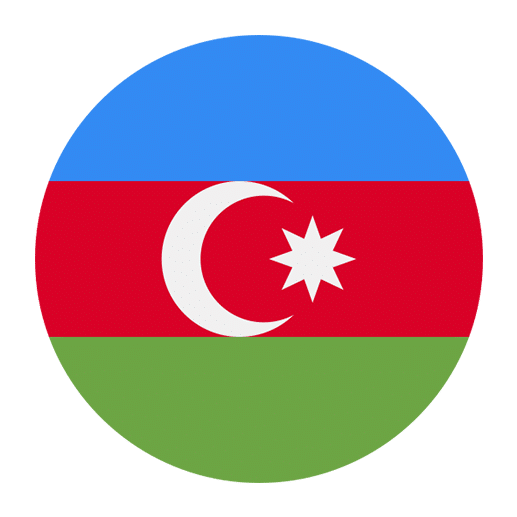Azerbaijani, also known as Azeri, is a Turkic language spoken primarily in Azerbaijan and parts of Iran. For English speakers, learning Azerbaijani presents unique challenges and opportunities, one of which is understanding the role of case endings in noun declension. Case endings in Azerbaijani are an integral part of the language’s grammar, serving to indicate the grammatical function of nouns in sentences. This article will explore the various cases in Azerbaijani, their endings, and how they are used.
The Basics of Azerbaijani Noun Declension
Azerbaijani nouns decline based on their grammatical case, number (singular or plural), and sometimes definiteness. There are six grammatical cases in Azerbaijani:
1. **Nominative**
2. **Genitive**
3. **Dative**
4. **Accusative**
5. **Locative**
6. **Ablative**
Each case has a specific role in the sentence, and understanding these roles is crucial for mastering Azerbaijani grammar.
Nominative Case
The nominative case is the base form of a noun and is used for the subject of a sentence. In Azerbaijani, the nominative case is also used for the predicate noun after the verb “to be” (olmaq). For example:
– **Oğlan** (boy) is the nominative form.
– **Oğlan gəldi** (The boy came).
In this example, “oğlan” is the subject of the sentence.
Genitive Case
The genitive case indicates possession or relationship and is equivalent to the English possessive case. The genitive case ending in Azerbaijani is usually **-ın / -in / -un / -ün** depending on vowel harmony. For example:
– **Oğlanın kitabı** (The boy’s book).
– **Qadının evi** (The woman’s house).
Here, “oğlanın” and “qadının” are in the genitive case, showing possession.
Dative Case
The dative case indicates the indirect object of a verb, usually corresponding to the English prepositions “to” or “for.” The dative case ending is **-a / -ə**. For example:
– **Oğlana məktub yazdım** (I wrote a letter to the boy).
– **Qadına çiçək verdim** (I gave the woman a flower).
In these sentences, “oğlana” and “qadına” are in the dative case, indicating the recipients of the actions.
Accusative Case
The accusative case is used for the direct object of a verb. In Azerbaijani, the definite accusative case ending is **-ı / -i / -u / -ü**, while the indefinite accusative case does not take any special ending but is marked by word order. For example:
– **Oğlanı gördüm** (I saw the boy) – definite.
– **Oğlan gördüm** (I saw a boy) – indefinite.
In the first sentence, “oğlanı” is in the definite accusative case, while in the second sentence “oğlan” is in the indefinite accusative case.
Locative Case
The locative case indicates location or place and corresponds to the English prepositions “in,” “on,” or “at.” The locative case ending is **-da / -də**. For example:
– **Oğlan məktəbdədir** (The boy is at school).
– **Kitab masadadır** (The book is on the table).
In these examples, “məktəbdə” and “masadadır” are in the locative case, indicating location.
Ablative Case
The ablative case indicates motion away from something and corresponds to the English prepositions “from” or “out of.” The ablative case ending is **-dan / -dən**. For example:
– **Oğlandan soruşdum** (I asked the boy).
– **Kitabdan oxudum** (I read from the book).
Here, “oğlandan” and “kitabdan” are in the ablative case, indicating motion away or origin.
Understanding Vowel Harmony
Azerbaijani, like other Turkic languages, features vowel harmony. This means that the vowels within a word harmonize to be either front vowels (e, i, ö, ü) or back vowels (a, ı, o, u). The case endings change based on the vowel harmony rules to match the vowels in the root word. For example:
– **Ev** (house) takes the locative ending -də to become **evdə** (in the house) because “e” is a front vowel.
– **Bağ** (garden) takes the locative ending -da to become **bağda** (in the garden) because “a” is a back vowel.
Understanding and applying vowel harmony is essential for correct noun declension in Azerbaijani.
Using Cases in Context
To fully grasp the role of case endings, it’s important to see how they function within the context of sentences. Let’s look at a few examples that incorporate multiple cases:
1. **Mən oğlanın kitabını oğlana verdim** (I gave the boy’s book to the boy).
– **Mən** (I) is the subject, in the nominative case.
– **Oğlanın** (the boy’s) is in the genitive case, indicating possession.
– **Kitabını** (his book) is in the definite accusative case, as it’s the direct object.
– **Oğlana** (to the boy) is in the dative case, indicating the indirect object.
2. **Qadın məktəbdən evə getdi** (The woman went home from school).
– **Qadın** (the woman) is the subject, in the nominative case.
– **Məktəbdən** (from school) is in the ablative case, indicating motion away.
– **Evə** (to home) is in the dative case, indicating the direction towards which she went.
Common Mistakes and Tips
Learning the correct use of case endings can be challenging. Here are some common mistakes and tips to avoid them:
1. Mixing up cases: It’s easy to confuse the different cases, especially when they serve similar functions. Practice by creating sentences and highlighting each noun’s case to reinforce the distinctions.
2. Ignoring vowel harmony: Vowel harmony is crucial in Azerbaijani. Always check the vowels in the root word before adding the case ending. If you’re unsure, consult a vowel harmony chart.
3. Overlooking context: The same noun can take different case endings depending on its role in the sentence. Always consider the noun’s function within the context of the sentence.
4. Practice with native speakers: Engaging in conversation with native Azerbaijani speakers can provide practical experience and immediate feedback.
Conclusion
Mastering the role of case endings in Azerbaijani noun declension is a vital step in achieving fluency in the language. Understanding how each case functions and how to apply vowel harmony rules will significantly enhance your grammatical accuracy. By practicing regularly and paying close attention to the nuances of each case, you can develop a strong foundation in Azerbaijani grammar. As with learning any language, persistence and practice are key. Happy learning!

